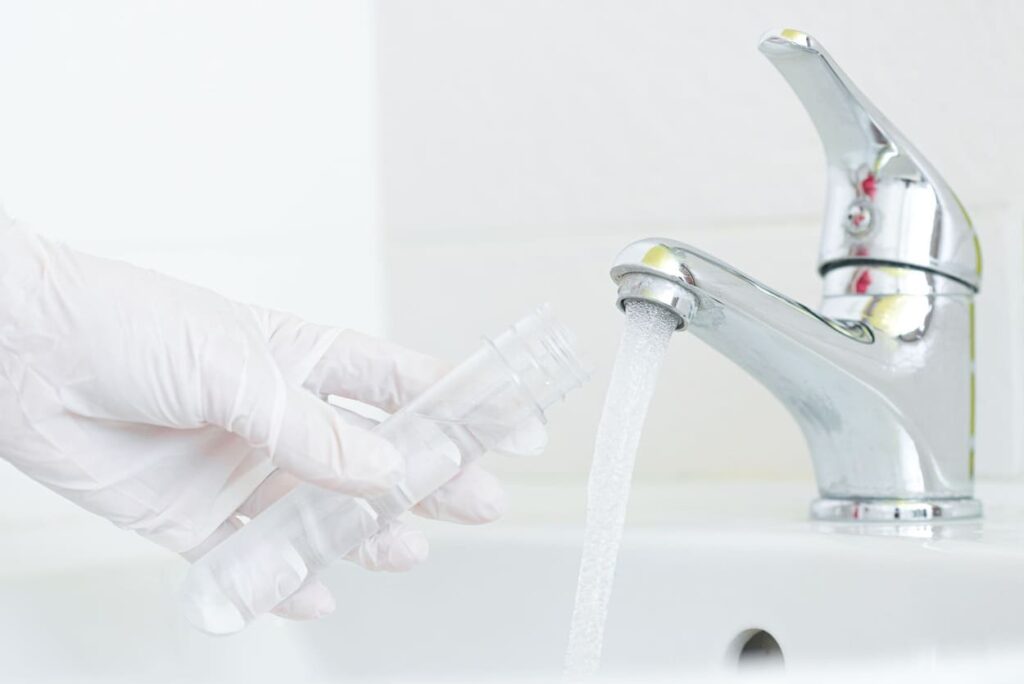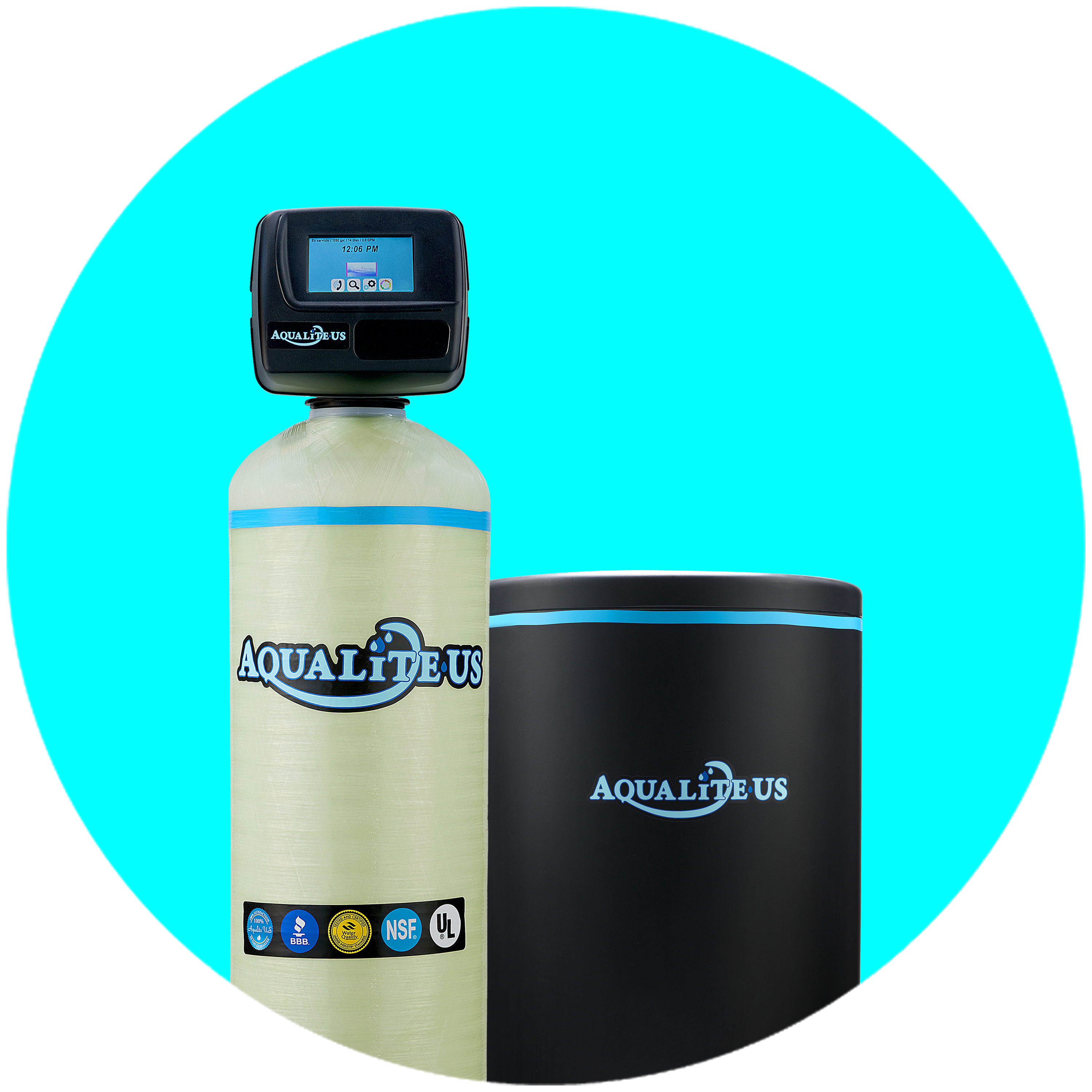Its odorless, tasteless, and found in abundance in the environment. Read our guide to learn what you need to know about arsenic in your well water.
It’s odorless, tasteless, and found in abundance in the environment. When ingested in large amounts, it could be harmful to your health and even lead to a coma or death. This harmful substance might be lurking in your well water.
It’s called arsenic.
Arsenic in well water is more common than you might think. And without knowing the possible health symptoms or getting professional water testing, you might never know it was there in the first place. Just a few weeks of arsenic exposure could cause severe health issues for you and your family.
Read our arsenic guide to learn what you need to know about arsenic well water.
What Is Arsenic?
Arsenic, believe it or not, is on the periodic table under the symbol “AS” and constitutes a semi-metallic material.
It’s naturally occurring, and you might find it in soils and rocks. Unfortunately, any water that comes into contact with rocks and soil containing arsenic can get contaminated.
Arsenic winds up in a lot in wells because of the abundant minerals in wells and groundwater. These minerals, such as sulfides and oxides, are an excellent place for arsenic to form.
You’ve probably heard of arsenic’s long history as a poison. Monarchs would use it to kill their political opponents slowly. People have known about the dangers of arsenic for hundreds of years.
Not only that but arsenic has been added to everything, including even makeup and candies. In the modern age, we’re well aware of arsenic risks and have gone to great lengths to avoid human ingestion where possible. Despite our best efforts, we still occasionally find it in well water.

Symptoms of Arsenic Poisoning
Arsenic is a known carcinogen and could lead to severe health effects. It harms the human vascular system and could cause diabetes in some cases. The most common form of arsenic ingestion is through drinking contaminated water.
If you have suffered arsenic poisoning, you may begin to notice some of the following symptoms:
- Skin discoloration and thickening
- Nausea, vomiting, and stomach pain
- Diarrhea
- Numbness in the extremities
- Blindness
- Partial Paralysis
If you experience any of the above symptoms, you should stop drinking from the tap and see a doctor. It’s better to be safe than sorry and get a test of your well water.
Am I at Risk of Arsenic in Well Water?
Arsenic tends to develop most commonly in specific regions of the US. These areas include the Rockies all the way out to Massachusetts and New Hampshire. These areas have a bedrock with known high levels of arsenic compared to the rest of the continental United States.
There is an abundance of online resources available to you if you would like more information. Check out the World Health Organization (WHO), the National Institute of Environmental Health Sciences (NIH), or any other agency run by your specific state. They may be able to tell you if the arsenic risks in your area are high.
Even if your area does not have high known levels of arsenic, you should be doing regular testing already. Every year, you should test for nitrates, bacteria, and any other potential chemical or mineral that puts you at risk. There might even be elements in your well water that aren’t inherently harmful but make for poor drinking quality.
Check your home’s water against the symptoms of water contamination just to be sure.
The good news is that your well won’t be contaminated forever. There are water treatment options to reduce or reduce arsenic from your water.
How Does Arsenic Show Up in the Well Water?
Most commonly, arsenic arrives in your drinking water after flowing through soil and rocks rich in arsenic. Other natural environmental occurrences, from volcanic activity to frequent forest fires, can create it, too.
We use arsenic in the production of everything from paint to semiconductors. Agriculture, mining, and metal processing can, in some cases, release arsenic. These sources of arsenic can move through the water system until they arrive in your groundwater.

Is There an Acceptable Level of Arsenic?
The Environmental Protection Agency (EPA) provides a clear standard for public drinking water. Although it doesn’t necessarily apply to private wells, you should keep it in mind.
EPA set the arsenic standard for drinking water at 10 ppb (or 0.010 parts per million). This protects consumers from the effects of long-term, chronic exposure to arsenic. If there are more than ten micrograms per liter of arsenic (that’s parts per billion, by the way) in your water supply, it’s too much. Ten and below is a safe level of arsenic. At this level of arsenic, you won’t suffer the negative consequences and symptoms.
Water Treatment Solutions for Arsenic
There are a few potential methods for reducing arsenic from your well water. The two most common are a point-of-use treatment systems (POU). POU treatment devices are generally the most cost-effective method for treating arsenic in drinking water. An example would be a Reverse Osmosis (RO) system.
However, it may be difficult to impossible to treat your entire home’s water supply with a point-of-use treatment system for Arsenic. Usually, the best solution is to treat with a Whole House Treatment System. There are many different types of systems, so it’s important you work with a professional who tests your water ahead of time and suggests a system that will solve all your water problems.
In addition to annual testing, you should make sure to test your water immediately after the installation of your preferred treatment device. It’s not recommended to trust that the device is working without testing.

Get Your Water Tested for Arsenic Today
As we learned Arsenic is poisonous to human beings. Unfortunately, arsenic in well water is widespread, providing a potential risk to you and your home. It’s in your best interest to get your well water tested and treated to avoid arsenic dangers.
Not sure where to start? We provide at-home test kits. If you’d rather get your water tested by a professional, you can schedule an appointment, and we’ll be happy to come.
For more information on Arsenic Download the Arsenic drinking water factsheet from the EPA:



